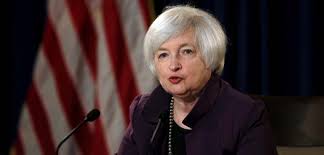By William Watts, Market Watch—
Investors are hunkered down ahead of the Federal Reserve’s Thursday decision on interest rates as analysts ponder whether the central bank would dare tighten monetary policy in the face of global financial market turmoil.
“There can’t be more uncertainty priced into the markets than there already is,” said Kevin Kelly, managing partner at Recon Capital Partners, in a phone interview.
That’s illustrated by measures of implied volatility. In a rare phenomenon, the CBOE Volatility Index VIX, -7.05% known as the VIX, last week traded above the CBOE Russell 2000 Volatility Index RVX, -6.66% Kelly noted, indicating that investors are particularly worried about what a rate increase would do to large-cap S&P 500 stocks that are more vulnerable to a stronger dollar and are more exposed to emerging markets than the more domestically focused small-cap firms that make up the Russell RUT, +1.08%
For now, investors are seeking refuge in more domestic-oriented companies, but once the Fed makes its decision, “the market could go either way,” Kelly said.
U.S. stocks rallied late in Tuesday’s session. The S&P 500 SPX, +1.28% is down around 3.9% for the year and remains more than 7% off its all-time high after recouping some of the territory lost in an August pullback that pushed it into correction territory.
An improving labor market and a growing economy are seen giving the Fed enough fodder to justify a hike. But many analysts see enough concern over low inflation and, more important, the impact of a rate move on fragile emerging markets as likely to stay the Fed’s hand.
Some fear trouble in emerging markets could reverberate through the financial system to cloud the U.S. economic outlook. The World Bank and the International Monetary Fund have both argued against a Fed rate increase out of concern a move could add to turmoil in emerging-market economies, which has been fueled by a collapse in commodity prices and related concerns about China’s economy and Beijing’s decision last month to devalue its currency.
Those concerns and a lack of consensus in the market, with fed-fund futures now pointing to a 25% probability of a rate increase this month, mean policy makers will likely be reluctant to move just yet, though they would likely move to communicate that a rate move remains on the way, said Tom Cahill, portfolio manager at Ventura Wealth Management, in a phone interview.
If the Fed were to deliver a hike, it would lead to at least an initial stock-market selloff, Cahill said. While the initial reaction would turn on the Fed decision and its accompanying guidance, investors would then turn their attention to earnings, he said.
If the Fed moves from an accommodative to a less accommodative stance, the “multiple expansion”—investor willingness to pay more for each dollar of earnings—that has helped fuel equity gains is going to be much harder to come by, he said.
Instead, “investors are going to look toward earnings to see if the market can be valued at a higher price,” Cahill said. And with earnings forecast to post a second consecutive decline in the third quarter, there “doesn’t look to be a lot of headway in the near term,” he said.
Not everyone believes a rate increase would be a negative for U.S. stocks—or for emerging markets.
Lena Komileva, chief economist at G-plus Economics, argued the case in a Monday note for a “dovish Fed hike.”
A rate increase could instead be the “healthy option” for the global economy, by helping to rebalance global demand away from emerging-market economies toward developed-market economies while also allowing emerging-market governments to undertake needed structural reforms, she said.
Holding rates steady would be taken as a sign of insecurity and indecision on the part of the Fed, Komileva said, raising questions about U.S. fundamentals as well as the ability of central banks to manage the withdrawal of quantitative easing.
“At worst, it could even send a signal that the Fed is willing to prioritize stock-market stability over economic fundamentals, leading investors to herd back into one-way margin-fuelled bets on equity and yield currency strength that contributed to China’s and emerging markets’ debt hangover in the first place,” she wrote.


Leave A Comment
You must be logged in to post a comment.